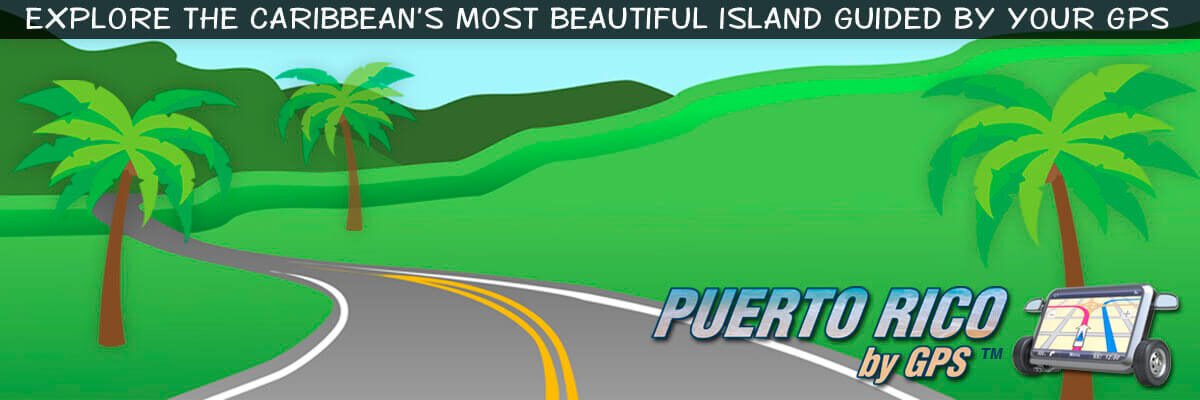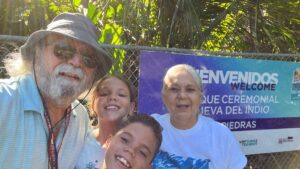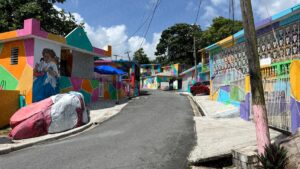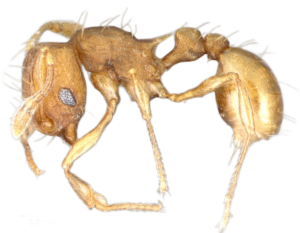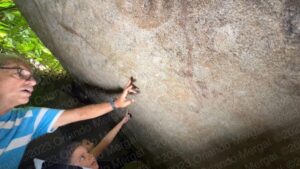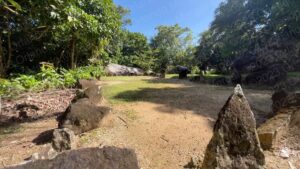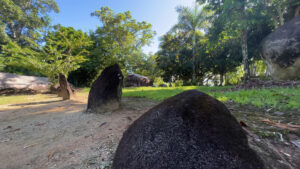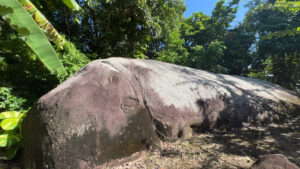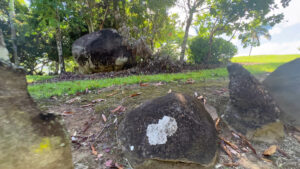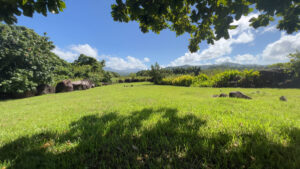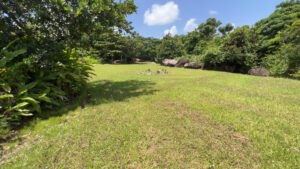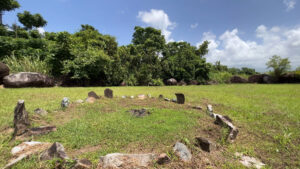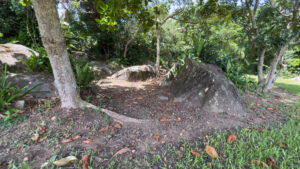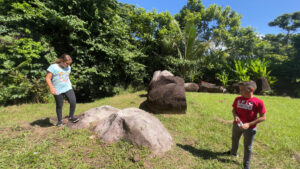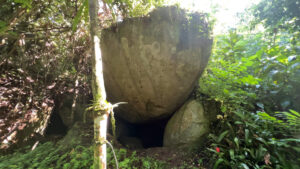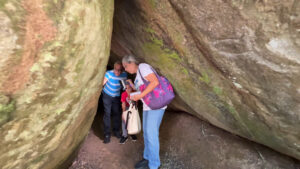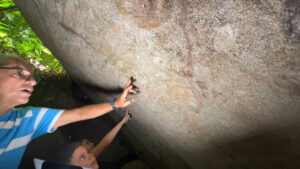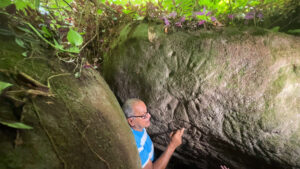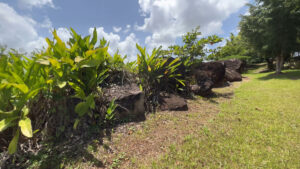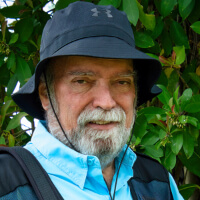I have a sentimental connection with Las Piedras. After all, I sold my first insurance policy there. I was a young man, starting off as a “salesman” with Combined Insurance Company. I hadn’t sold anything in my life, so the experience was terrifying.
After stumbling through a canned presentation, I finally sold my first insurance policy to an old man at the town square. It was all sweaty and wrinkled and I was on the brink of a nervous breakdown.
Every one of us has had one of those experiences. Things that we laugh at today, but weren’t funny at all when they actually happened. Don’t we?
Well, there I was, at the main square of Las Piedras. Forty six years later. It was closed and barren; not exactly the image that I had in my mind!
There used to be a kiosk at the corner of the plaza, where I made that first sale. Well, it’s no longer there. City Hall is in ruins. The Immaculate Conception Parish is in ruins too.
How did this all become such a mess?
In one word: María.
Hurricane María made landfall in Yabucoa, Puerto Rico. It was 6:15 in the morning local time, when the storm hit as a category 4. It was devastating. Not only in Yabucoa, but across all Puerto Rico. That’s how my memories of Las Piedras were wiped out.
All of a sudden my wife and I found ourselves trying to produce a “five must-see places” video in a town that had nothing to see. Or did it?
Like always, I had prepared a list of places to visit complete with GPS coordinates. City Hall, check! The main square, check! The Immaculate Conception Parish, check! Next on our list: the “Las Piedras Ceremonial Park and Indian Cave”.
What was that? I had never heard of it, let alone visited it. But hey, I was running out of options so what the heck.
As we started towards the park we went by a community with houses painted in bright colors. This has become a trend in Puerto Rico. It seems like every community with little or nothing of historical significance resorts to bright colors to attract local tourists. And it seems to work, because they keep doing it.
But I was never going to attract someone sitting in “Whateverville, U.S.A.” with houses painted in pretty colors, so I continued on my way.
For someone travelling from abroad, the “Las Piedras Ceremonial Park and Indian Cave” is basically in the middle of nowhere. So your best bet is to punch the following coordinates into your GPS and follow its every command: [18.194674, ‑65.871958]. Later on I’ll give you additional coordinates to get you back to State Road 30 and to the San Juan Metroplex.
The first time that I visited the park they were closing. The attendant was gracious enough to let me in to walk around for a few minutes, but in the end he was about to leave. I told him who I was, and why I was there, and he offered to give us a V.I.P tour at a later date.
Normally I pass on this kind of offer because it entails another visit, 90 more minutes of driving and additional expenses. But the place seemed amazing so we scheduled for Friday, September 8.
On the morning of September 8 the heat index was through the roof so the local government closed down the schools while they “put their minds together” (that’s a scary thought) and explored possible solutions. That meant that my grandchildren got to spend some quality time with grandma and grandpa.
There we were. All four ready to explore.
My granddaughter was the first to have a brush with nature. She was stung by an “aballarde”. What’s that, you might ask? Well, think of it like a fire ant on steroids that will sting you off your feet! She got bit several times. And here’s the thing, the bites will itch. And the more you scratch, the more they’ll itch.
So what’s the message here? If you’re planning to visit the “Las Piedras Ceremonial Park and Indian Cave” bring insect repellant (the deep woods variety) and —since your still going to get bit (only less)— bring a tube of Benadryl gel.
And, since “aballardes” live on the vegetation, try not to brush against the plants and you’ll be better off.
There’s no poison ivy in Puerto Rico —in case you’re wondering— but there is a plant called “ortiga” (“stinging nettle in the King’s English) that causes a terrible itch. Just ask your guide and follow his instructions to the letter.
When we got to the park we met with Mr. David Velázquez. He’s a chatty fellow that knows every inch of the park. He’s also a self-taught expert in everything related to the Taínos.
Just to drive a point home, the Taínos were not “indians”. Neither were any of the tribes in North or South America. They were natives. They weren’t even “Native Americans” because the name America came later. And they weren’t “indians” because that was the name given by Christopher Columbus to the natives of what he believed to be “the indies”.
They were simply natives, like an Italian would be a native of Italy. Back to our story.
Our first stop was at the ceremonial center. Taíno ceremonial centers were controlled by the tribe’s “shaman” or spiritual leader. You can tell by the shaman stone that’s about halfway down the right side of the center.
This was also where the ‘Areyto” was danced.
According to Wikipedia an Areyto was “a kind of rhyme or romance that our Taíno ancestors sang and danced to at the same time. The inspiration was in their daily stories, that were sung in chorus or individually by an individual, whose mission was to guide the dance and/or the story, which the others repeated”.
So basically, it was their way of communicating current events.
The ceremonial center was also where they celebrated special events such as victories over their rivals, a good harvest, a birth, a death, a marriage… it would all be done at the ceremonial center to thank their divinities.
- Shamán Stone
(click on image to see it larger)
- Manatí Stone
(click on image to see it larger)
- Butterfly Stone
(click on image to see it larger)
Some of the special features of this ceremonial center include the shaman stone, which portrays a shaman with double ears, double eyes and double mouth (meaning that he could see, hear and speak better than anyone); a huge stone shaped like a Manatí and the butterfly stone.
And here’s a true fact for you. Even after 500+ years this area is still known for its abundant butterflies.
Taínos would almost always live next to the rivers, where they would obtain food and water. That’s where they’d also build their “bateyes” (or “batey” in the singular sense). Some historians argue that all sorts of events took place at the “batey”, including those of a religious nature. But our guide David Velázquez was adamant that the ceremonial center was were religious events took place and the “batey” was where the “batú” was played.
- Batey
(click on image to see it larger)
- Batey
(click on image to see it larger)
- Batey
(click on image to see it larger)
- Seats
(click on image to see it larger)
- Seats
(click on image to see it larger)
“Batú” was a game, very similar in nature to modern day soccer, that was played between two teams, using a ball made of tree roots and resin. The ball had to be hard and bouncy enough to play with, but not hard enough to hurt their heads.
The players could come into contact with the ball with their body, legs and head, but never with their hands.
You can still see the exact rock where the “batú” balls were manufactured. You can also see the seats, carved into the stone, where the “cacique” and his protectors would sit to enjoy the game.
And in case you haven’t figured it out by now, the “cacique” was the tribal chief. And in the the case of this park in particular, his name was “Jumacao”.
The “batey” at “Las Piedras Ceremonial Park and Indian Cave” is exactly as it was the last time a taíno played “batú” there. The only difference is that now it has grass on it, because keeping it in a barren state would bring additional expenses that the park can’t cover at this point.
You will also see El Yunque National Forest in the distance. This wasn’t an accident. The Taínos believed that their gods lived at El Yunque so the “batey” faced that way. You will learn additional tales about those gods a little later, but for now let’s just leave it at that.
From the “batey” we went to the large cave. This is the cave where the Taínos would refuge in times of war and hurricanes. It’s the largest of the two caves. Another fact is that it has no petroglyphs. More on that later.
We didn’t enter the larger cave because the entrance was wet and slippery. Instead, I lowered a camera on a large pole to take the best images possible. My adventurous nature has its limits at age 69.
From there we continued to the smaller cave which David Velazquez calls “the library”.
Before reaching the cave Velázquez showed us the many warrior seats carved in the stones all around the entrance to the “library” cave. This shows the importance that this cave had for them.
Inside the cave there are 178 petroglyphs depicting all aspects of taíno life. But there’s one in particular that will raise the hair on the back of your neck. It depicts some sort of being with a giant head, a small body, arms with three fingers, a small nose and mouth, and very large slanted eyes. Above him some sort of ship with rays that shine upon the being below.
- Library Cave
(click on image to see it larger)
- Library Cave
(click on image to see it larger)
- Extra Terrestrial Petrogyph
(click on image to see it larger)
According to Velazquez that means that the being below came from the ship above!
Even if that weren’t the case, how did the primitive Taínos come up with an image like that? How did they move all those huge stones to build their ceremonial park and batey?
Those of us that have taken an anthropology course in college, learn that nature doesn’t create straight lines. Every time you see something in a straight line it’s because it’s man made, So how did the Taínos move all those heavy rocks to build a rectangular “batey”?
There’s another thing that will blow your mind at the “Las Piedras Ceremonial Park and Indian Cave”, but David Velázquez made me promise not to tell. So you’ll have to ask him when you go there. I can only promise that it will leave you wondering. That’s if he tells you!
So what do you think so far? Is it worth exploring? How much do you think the admission is? Well, whatever number you came up with, you’re wrong, because admission is free!!!
That’s right. ¡Gratis!!!
However, you can’t walk right in. You’ll need a reservation. Because David Veláquez is the only one there and he has to schedule his time very carefully. Just call 787–733-2160 and they’ll take care of you.
And in case you’re wondering, there are two additional attractions that people mention in Las Piedras that we decided to ignore.
The first was Cerro Los Gatos, which requires a long and strenuous climb. The second was Monte del Retiro, which was just up the road from La Cueva Del Indio. Monte del Retiro is a private property where there are three enormous rocks with petroglyphs. However, the owner charges $15 per person just to go in. That would’ve been $60. So we decided to pass.
NOTE: Due to the large extension of land covered in this post, you will need to zoom in and out on the map to see every pin. Please pardon the inconvenience.
As you exit the park you’ll want to get back to State Road 30. To do so just punch the following coordinates into your GPS: (18.185114, ‑65.887913). And to get back to San Juan just follow these (18.446976, ‑66.068866) and you’ll get to the Minillas Tunnel.
And talking about San Juan, if you’re planning to visit the Old City, save yourself the hassle of traditional city tours. They’re expensive and you’ll be herded along with people that won’t necessarily share your interests.
Instead, order The Old San Juan Walking Tour. It’s packed with useful information about all the main attractions, as well as every GPS coordinate and two hours of exclusive online video. That way you’ll be able to —visit before you visit— and hit the ground running when you arrive in the Old City.
Until next time!
©2023,Orlando Mergal, MA
____________________
Bilingual Content Creator, Blogger, Podcaster,
Author, Photographer and New Media Expert
Tel. 787–750-0000, Mobile 787–306-1590
